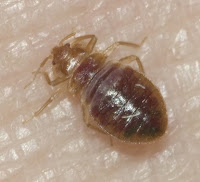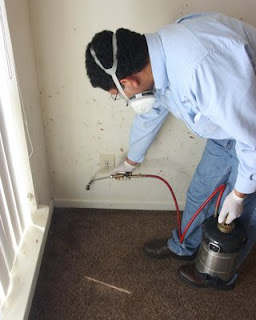 College Station, TX. Yesterday the entomology department at Texas A&M University suffered a shocking loss with the unexpected death of Professor and Extension Entomologist, Dr. John Jackman.
College Station, TX. Yesterday the entomology department at Texas A&M University suffered a shocking loss with the unexpected death of Professor and Extension Entomologist, Dr. John Jackman.John was a wonderful colleague with an encyclopedic knowledge of insects. For all the tough entomology questions (and there are lots of them) he was the go-to guy for me and my colleagues . Whenever there was a question I couldn't answer, I'd call John.
For the past 19 years since I've been here, John has been the department's principal responder to phone calls received from the public--no easy task. In addition, he was one of the first extension faculty to see and take advantage of the Internet's potential for public education. He built the departmental home page, the second most visited website in the Texas AgriLife Extension system. I've often wished I had half the computer knowledge he had.
In addition to his research on a wide variety of Texas insect and pest management issues, John was author and co-author, respectively, of A Field Guide to Spiders and Scorpions of Texas and A Field Guide to Common Texas Insects (Gulf Press Field Guide Series).
John loved the outdoors, and taught courses on aquatic entomology and, most recently, fly tying. The fly tying course was an innovative class that integrated concepts of aquatic biology with art and craftsmanship. It was offered through Texas A&M's entomology and art programs.
He was a long-time volunteer in the Boy Scouts of America, a dedicated husband and father to three sons. He leaves a hole that will never be filled.
Since 2003, I've been privileged to work with John and Extension colleague, Carlos Bogran, on the Texas Master Gardener Entomology Specialist program, an intensive, one-week course on entomology for Master Gardeners and Master Naturalist volunteers. To see images of John at work with the program, click here. Without John's leadership and initiative it never would have happened. John, we'll miss you greatly.
AgriLife Extension's AgNews this weekend posted a brief obituary of John with a link to the College Station Eagle's guest register where memorial notes can be posted online.




 Dallas, TX. We hear of rare illnesses and diseases nearly every day in the newspaper or on television. After a while, I think most of us become a little jaded, and tend to forget or ignore threats that have not affected us personally. One of these relatively obscure diseases is a mosquito-borne illness called West Nile virus. Since 2002 Dallas county has averaged 45 clinical cases and two deaths a year.
Dallas, TX. We hear of rare illnesses and diseases nearly every day in the newspaper or on television. After a while, I think most of us become a little jaded, and tend to forget or ignore threats that have not affected us personally. One of these relatively obscure diseases is a mosquito-borne illness called West Nile virus. Since 2002 Dallas county has averaged 45 clinical cases and two deaths a year. 
